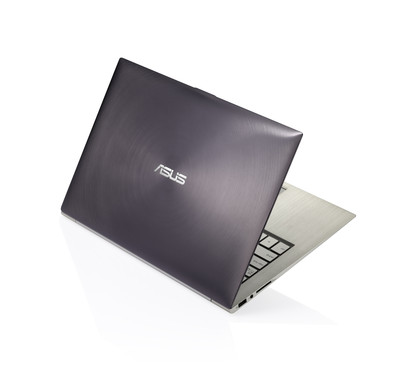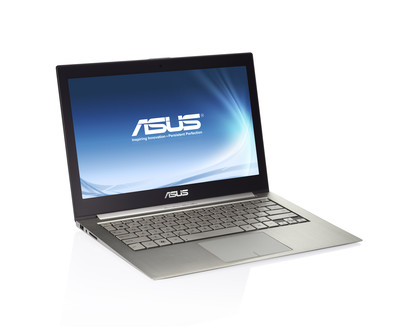Why you can trust TechRadar

TechRadar Labs

Cinebench 10: 8726
3D Mark '06: 3623
Battery Eater '05: 253 mins
Both processors in the 13-inch are from Intel's second-generation Sandy Bridge family and mean the Zenbook can easily handle multi-tasking, varioius demanding apps and multiple displays using the Sandy Bridge chips' in-built HD 3000 graphics capabilities.
However. the lack of non-dedicated graphics from AMD or Nvidia does hit the Zenbook in the performance pocket - hence our relatively modest 3D Mark score.
We felt the display wasn't the best - dark colours and especially blacks seem a little washed out - but definition is good. We also found the viewing angle wasn't great for watching video and working alongside others.
Speed, clearly, is the focus of the ultrabook range and the Zenbook is no slouch. The instant-on feature means you can be up and running in just two seconds from sleep mode and standby time will hit two weeks on a single charge.
The Core i7 unit featured here performs brilliantly and it was able to handle multiple browsers, Outlook and Word 2010, Spotify, FileZilla and image editing apps all concurrently. You really find you can do what you want, when you want.
There were a couple of times when we found this wasn't the case - several times when switching power states suddenly (like unplugging the charger) meant that the whole system seemed to struggle to adapt - browsing became slow and we had to let the system calm completely down. Also we found that using more intensive apps could make things hang - handling a load of images inside Microsoft Publisher, for example.
Even with heavy use during our testing, the Zenbook's battery lasted for an impressive 253 minutes. And when the battery does dip below 5 per cent, the Zenbook will automatically save any files in progress to avoid you losing all your work when the machine shuts down.
The battery can seem like it's draining reasonably quickly when doing any tasks on high performance but on power saving mode this thing is positively frugal, going for around six hours if you're careful. Asus quotes seven, but you'll have to barely use it to get that. So we're not at the all-day battery life scenario yet, but we're getting closer.
The slim design means physical connectivity isn't as abundant as regular laptops, but there's still enough here to satisfy most users.

Asus has included two USB ports, one of which is USB 3.0 as well as an SD card slot plus a mini HDMI and mini DislayPort for connecting the ultrabok to an external TV or monitor. The Zenbook also has 802.11n Wi-Fi and cutting edge Bluetooth 4.0 wireless connectivity.

Good value?
Although the 13.3-inch Zenbook will set you back from £999, that;s still £100 less than the cheapest 13.3-inch Macbook Air.
Similarly, Asus has matched Apple with pricing for the 11.6-inch model which, like the smaller Macbook Air comes in at £849. Considering the technology and the form factor, a starting price point of under a thousand pounds is good value for money - especially when you consider other such ultraportables have cost as much as £1,500 in the past.

